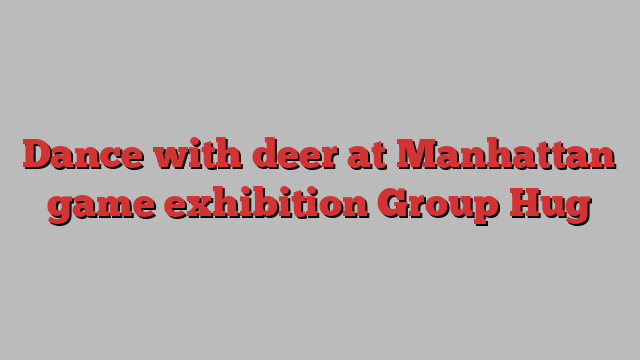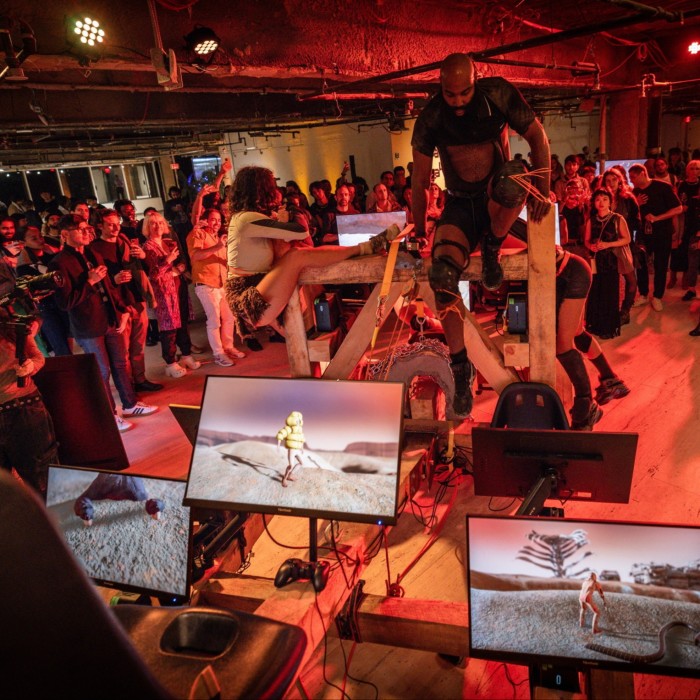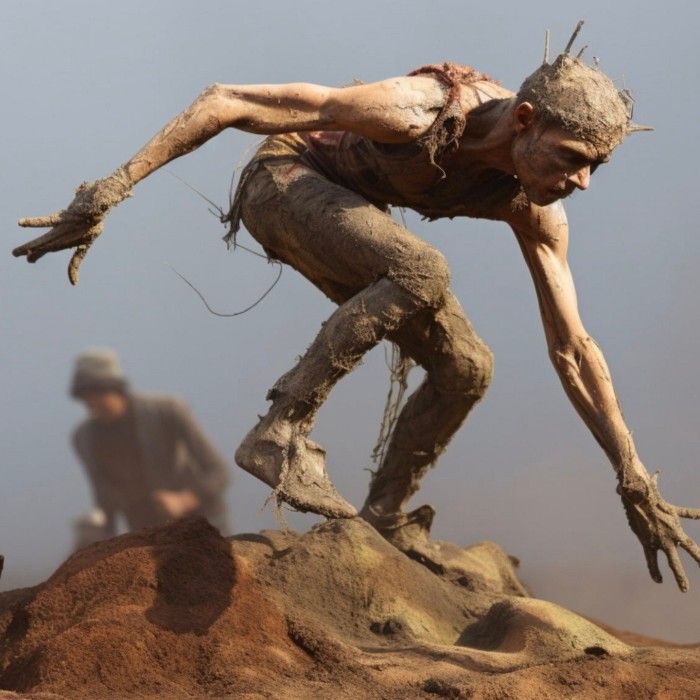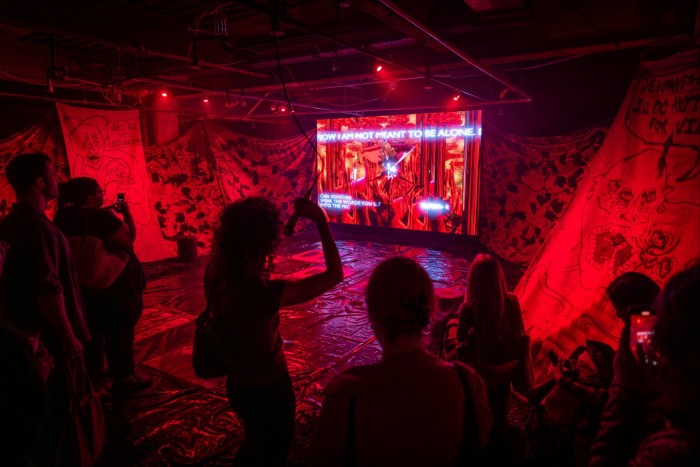
Unlock the Editor’s Digest for free
Roula Khalaf, Editor of the FT, selects her favourite stories in this weekly newsletter.
I am a deer in an enchanted forest. I trot through a sun-dappled grove, jump over logs and drink from a lake. There are other deer, too, but we can only communicate through body language. We bow, kneel, dance . . .
Even for someone well versed in video games, The Endless Forest, created by Auriea Harvey and Michaël Samyn, is confounding. Every deer is controlled by a human somewhere in the world. There are no objectives, no challenges, no path to victory. We cannot communicate by voice or text. This game refuses to give what most eagerly provide. And as a result, in its own quiet way, it encourages us to question how we might create a digital society that fosters kindness.
When the project was first created in 2005, it was unusual to see a game made for the purposes of artistic experimentation. Today, it is more common. The Endless Forest is one of three works on show in Group Hug, an exhibition organised by Onassis ONX and held at Water Street Associates (WSA) in Manhattan’s Financial District. Grouped loosely around the theme of digital society, each is an experimental multiplayer game that interrogates how humans interact in a virtual space.
When video games enter art galleries, they typically come in one of two forms. Either they are commercial games displayed for the appreciation of their aesthetic and cultural value, as they have been at MoMA, the Smithsonian, the V&A and others. Or they are what we might call a “gallery game” — made for the purpose of artistic provocation rather than purely as a piece of home entertainment. Gallery games tend to be shorter, stranger and more oblique.
Set in a cavernous space with concrete floors and wraparound windows offering glimpses of the Hudson river, a floor of the WSA is dedicated to Group Hug. Each game is given its own zone and set design, as if its digital world is spilling out into the physical surroundings. The screens of The Endless Forest are surrounded by houseplants and soft lighting, while another work, Theo Triantafyllidis’s Feral Metaverse, features screens and controllers arranged on a large wooden catapult that looks built for a siege. The catapult is set among tattered wall hangings that display imagery of stick figures locked in an orgiastic tangle of limbs.
After climbing on to the catapult — you must sign a safety waiver — you control one of eight characters in a scorched desert wasteland reminiscent of Mad Max, where bleached skeletons of colossal beasts and the charred carapaces of cars are strewn across the sand. Each player controls a monstrous figure who, despite their humanoid form, exhibits animal behaviour. When you instruct your character to run, they get down on all fours to bound like a dog.


Triantafyllidis subverts our expectations of typical game mechanics by assigning each button not to jump, punch or shoot but to grab, scream, urinate or bury your head in the ground. It comes across as a farcical, somewhat glib commentary on how people are reduced to their most primitive selves in virtual spaces. However, there is also hope: the game’s objective is to assemble your creatures around a giant in-game catapult — forcing you to work together to operate it — in order to fling yourselves far from this feral landscape, perhaps to a better place.
The final game, by Danielle Brathwaite-Shirley, is the strangest and most arresting. Her work often tells twisted stories of the Black trans experience through a kaleidoscope of poetic dialogue, ethereal sound design and gameplay that resembles lo-fi horror games. The Lack: I Knew Your Voice Before You Spoke is displayed in a dark room on a huge screen, its narrative alternating between a glitchy monster hunt and cryptic dialogues with low-polygon characters about sexuality and gender.
The most interesting part is how you interact. Rather than a controller, you use huge buttons on the floor. It resembles a Dance Dance Revolution mat for a giant, buttons set so far apart that you must join forces with other gallery-goers to operate the game. Microphones hang from the ceiling and you are instructed to read sentences from the game aloud — it turns out that saying “I feel unlovable” into a microphone in front of strangers makes you feel exposed and vulnerable in ways you might not expect from a trip to an art gallery.

Brathwaite-Shirley and Triantafyllidis are among a group of young artists who grew up gaming and now use the tools of game design to create works more suited to an art gallery than a home console. Sometimes these are playable, but they can also be “machinima”, films created in game production software using computer-generated graphics. Other key artists in this community include Lu Yang, whose humorous films and micro-games explore ideas of eastern cosmology and reincarnation, and Lawrence Lek, who recently received the Frieze Artist Award for a playful game installation telling the story of a robot therapist designed to help AI displaying “problematic” behaviour.
If you go in to Group Hug expecting the fun, polish and dopamine satisfaction of a Call of Duty shootout you will be disappointed. But if you come with an open mind and a willingness to be challenged, there is plenty to chew on. The intersection between games and art is still an undefined space. While the results can feel scrappy in their technical execution or woolly in their themes, it’s exciting to see artists experimenting with form, presentation and playability. They are forging a space for games to move beyond entertainment to stake a place as mysterious art objects in their own right.
After a long time wandering alone through The Endless Forest, I found another group of deer congregating in a glade, each controlled by another person somewhere far away. As I arrived, they turned to look at me. Unable to speak with them, I decided to dance, a slow cloven-hoofed shuffle across the forest floor. One by one, the other deer started to dance, too. Something was occurring between us. I wasn’t sure what it meant exactly, but it felt like art.
To October 20, WSA, New York
Find out about our latest stories first — follow FT Weekend on Instagram and X, and subscribe to our podcast Life & Art wherever you listen